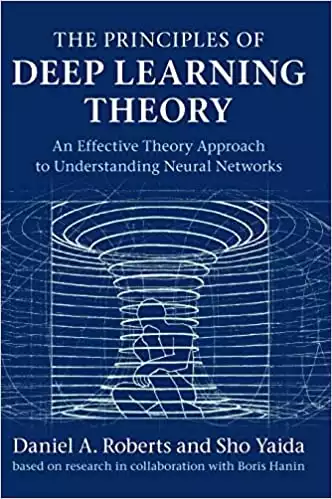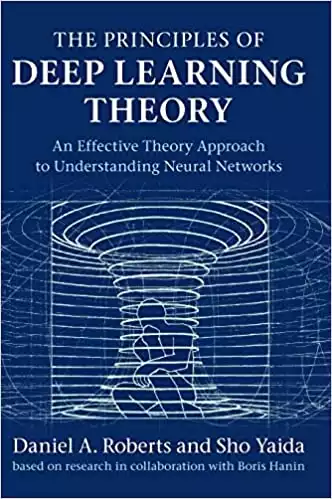Introduction: What is Deep Learning? Is it the Same as AI?
To understand what is deep learning, you need to know a little bit about AI. Deep learning allows the exploration of areas that mimic the human brain and helps us transform machines to smart intelligent machines that can mimic human intelligence.
Also Read: What Is Geometric Deep Learning?
What is human intelligence?
According to Encyclopedia Britannica – human intelligence is mental quality that consists of the abilities to learn from experience, adapt to new situations, understand and handle abstract concepts, and use knowledge to manipulate one’s environment.
What Is Artificial Intelligence?
It is a field in which computers and robots are capable of mimicking and going beyond the capabilities of humans, with the aim of achieving artificial intelligence. With the help of AI-enabled programs, you can analyze and contextualize data in order to provide information or trigger actions without the need to rely on manual intervention.
It is no secret that artificial intelligence is at the heart of a wide variety of technologies that we use today, including smart devices and voice assistants like Siri, Alexa, Google home, and Bixby. It is becoming increasingly popular for companies to use techniques such as natural language processing, computer vision – which is the ability for computers to understand human language and interpret images – to automate tasks, accelerate decision making, and enable customer conversations via chatbots.
Also Read: The Role Of Artificial Intelligence in Boosting Automation.
What Is Machine Learning?
The goal of machine learning is to create artificial intelligence through the process of learning. It is a subcategory of Artificial Intelligence that uses algorithms to automatically learn from data and recognize patterns, and then apply this learning to make increasingly better decisions.
Programmers study and experiment with machine learning to determine how much they can improve the perception, cognition, and action of a computer system by testing the limits of what they can do.
What is Deep Learning?
Deep learning, an advanced method of machine learning, goes a step further than machine learning alone. In deep learning models with large neural networks, which function very much like a human brain, data is logically analyzed to learn complex patterns and make predictions without any human intervention.
The deep learning process involves creating neural networks that contain more neurons, layers, and connections. Even though we are still a long way from mimicking the human brain in its complete complexity, we are making progress in that direction.
It’s important to note that whenever you read about technological advancements from autonomous cars to Go-playing supercomputers to speech recognition, that’s deep learning at work. This is the process where artificial intelligence is being applied. Artificial intelligence is a result of some form of deep learning behind the scenes.
Let’s take a look at a couple of problems to see how deep learning differs from simpler neural networks or other forms of machine learning. Deep learning is a subset of machine learning; in fact, it’s simply a method for applying machine learning. This is why we refer to it as the next generation of machine learning.
Algorithms that implement deep learning are loosely based on the pattern of information processing in the human brain. We normally use our brains to identify patterns and sort various types of information, and deep learning algorithms can also be used to teach machines to perform the same tasks. When we receive information, the brain attempts to interpret it in a meaningful way. It achieves this by dividing up the items into different categories and then assigning them various labels. In any given situation, our brain has a tendency to compare a new piece of information with something we know before interpreting it, which is the same principle applied to deep learning algorithms.
For instance, while deep learning can automate the discovery of the features to be used for classification, ML requires the user to manually provide them with the information required for classification. As compared to machine learning, deep learning is a much more complex method that requires high-end machines and massive amounts of training data in order to deliver accurate results.
Also Read: AI In Robotics: an Assimilation For The Next Phase In Technology.
Machine learning and deep learning are subfields of AI
Artificial intelligence consists of many subfields, like machine learning, deep learning..etc.
Machine learning automates the process of building analytical models. By using a combination of methods coming from neural networks, statistics, operations research, and physics, it is possible to find hidden insights in data without having to be explicitly told where or what to look for.
The neural network is a kind of machine learning system that was inspired by the workings of the human brain. In computing terms, it is a system comprised of several interconnected units that process data by responding to external inputs and relaying information between these units. To find connections and derive meaning from undefined data, this process needs to traverse the data several times in order to find the connections.
In order to achieve deep learning, we construct large neural networks with many layers of processing units, which makes use of advances in computing power and improved training techniques in order to discover complex patterns in a large amount of data. Speech recognition, is one common use case.
To recognize what is in a picture or video, computer vision relies on pattern recognition and deep learning strategies. Whenever machines are capable of analyzing, processing, and interpreting images in real time, they can capture images or videos in real time and understand their environment.
An application of natural language processing refers to the ability for computers to analyze, understand and generate human language, including speech. As a next step in the development of NLP, the next step is the development of natural language interaction, which allows humans to communicate with computers using common, everyday language to accomplish tasks.
While machine learning is built on the premise that machines should be able to learn and adapt based on experience, Artificial Intelligence refers to a broader view where machines are able to process information “smartly.”
Artificial intelligence uses machine learning, deep learning, and other techniques to solve problems that exist in the real world.
Deep Learning: More Accuracy, Math & Compute Power
This subset of machine learning is known as deep learning. Deep artificial neural networks, or DANNs, are essentially the same thing as deep learning. They are a set of algorithms that have achieved astounding results when dealing with various types of important problems, such as image recognition, sound recognition, recommender systems, natural language processing, etc. To make a long story short, when people refer to deep learning, they are usually referring to deep artificial neural networks.
Deep learning, for example, is a key component of DeepMind’s well-known AlphaGo algorithm, which defeated the former world champion Lee Sedol at Go in early 2016 along with the current world champion Ke Jie in early 2017.
The term deep in deep learning, refers to a technical term. The term refers to the number of layers present in a neural network. Deep networks have more than one hidden layer, whereas a shallow network has a single hidden layer. A deep neural network may have multiple hidden layers that can learn the features of the data in a so-called feature hierarchy, by recomposing simple features from one hidden layer to the next, to form more complex features. Typically, a neural network with many layers passes input data through many more mathematical operations than a neural network with few layers, and thus is more computationally intensive to train. Among the hallmarks of deep learning is high computational intensity, and that is one of the main reasons that a new kind of chip called GPUs is becoming so popular for training deep-learning models.
Why Is Deep Learning Better Than Machine Learning?
Deep learning has several advantages over machine learning, including the fact that the data extraction can be redundant. Prior to using deep learning, there was a time when traditional machine learning methods (decision trees, SVM, Naive Bayes classifier, and logistic regression) were most popular. Also known as flat algorithms, these are commonly used in real-time systems. The term “flat” refers to the fact that these algorithms typically can not be applied directly to raw data (e.g., .csv files, images, text files, etc.). The feature extraction process is instead required as a preprocessing step.
The idea behind feature extraction is to provide an abstract representation of the raw data that can be used by machine learning algorithms. The problem of feature extraction usually represents a rather complex problem that requires in-depth knowledge of the domain of the problem. Adapting, testing, and refining this step over a number of iterations is crucial for optimal results to be achieved. Feature extraction is not required for deep learning models.
Artificial neural networks can be referred to as deep learning models. These models do not require feature extraction in order to work. As a result of this technique, the layers are able to learn implicit representations of the raw data on their own.
With deep learning, the model creates an abstract, compressed representation of the raw data over several layers of an artificial neural network. Using a compressed representation of the input data, we then calculate the result using the input data.
To achieve the best possible representation of the input data, the neural network optimizes this step to obtain the best possible abstract representation of the input data in the training process. The features extraction process in deep learning models requires little to no manual effort in order to perform and optimize. As such, feature extraction is integrated into the process that occurs within the artificial neural network without the need for human intervention.
If you want to use a machine learning model to determine whether a particular image shows a car or not, we humans first need to identify the unique features of a building, extract these features and give them to the algorithm as input data. The machine learning algorithm would then perform a classification of the image. That is, in machine learning, a programmer must intervene directly in the classification process.
The Era of Big Data
Another major benefit of deep learning is that it is based on massive amounts of data, and one of the biggest reasons why it is becoming so popular. It is evident that the upcoming era of big data technology will provide us with a great deal of opportunities for new innovations in deep learning.
A deep learning model has the advantage of gaining more accuracy over time as a result of more training data, while other traditional machine learning models, such as SVM and Naive Bayes classifiers, cease to improve after a saturation point.
In recent years, all advances in intelligence have been attributed to deep learning. It would be impossible to have self-driving cars, chatbots, or personal assistants like Alexa and Siri without deep learning. Netflix would have no way of suggesting movies or TV shows based on what Google Translate suggests, and Google Translate itself would remain a primitive tool.
In fact, we can even go as far as saying that deep learning and artificial neural networks are responsible for the new industrial revolution. In particular, deep learning is the closest thing we have so far to true machine intelligence, since deep learning has two major advantages over machine learning.
Also Read: AI and Autonomous Driving
Conclusion
AI is the process of developing devices with some degree of human-like intelligence. Among the multitude of AI techniques available today, one subset of those techniques is machine learning – allowing algorithms to learn from the data they are given. Finally, deep learning is a subset of machine learning, using many-layered neural networks to solve the most difficult of problems. Deep learning network can improve customer experience and solve complex problems that linear regression cannot solve inherently.
Deep learning is evolution of machine learning, for example, Image processing, deep learning can do image classification of millions of images, very quickly and independently. Something like this can help improvements in autonomous vehicle as we start determining trees from human beings, and traffic lights. This does require a lot of cognitive functions working together and processing huge amounts of data in real time while making decisions based on decision tree, this makes deep learning applications critical to future of products and intelligent machine based applications.












